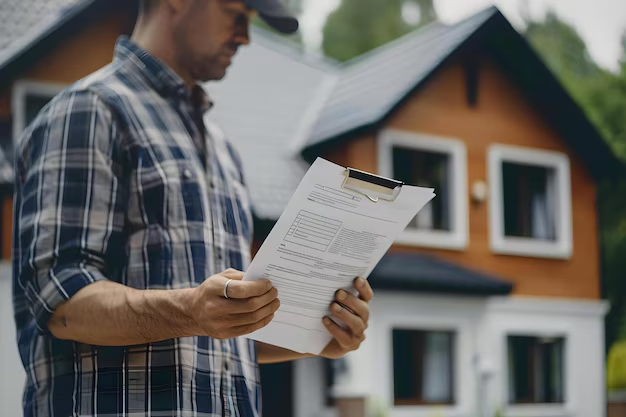Understanding HELOC Loans: Qualifying with Confidence
Imagine transforming your home equity into cash that you can utilize for renovating your kitchen, consolidating debts, or funding your child's college education. This is the power of a Home Equity Line of Credit (HELOC). But how can you qualify for a HELOC loan? Below, we navigate through the criteria, key considerations, and practical steps involved in securing a HELOC loan.
🏠 What is a HELOC?
A HELOC is a revolving line of credit secured by your home. It allows you to borrow against the equity you've built in your property, offering the flexibility to withdraw funds as needed within a set timeframe, known as the draw period. Unlike a conventional loan, a HELOC typically comes with variable interest rates, making it a suitable option for those comfortable managing fluctuating repayments.
Key Benefits of a HELOC
- Flexibility: Borrow as needed rather than in a lump sum.
- Potential Tax Benefits: Interest on HELOCs might be deductible.
- Lower Rates: Typically offer lower interest rates compared to credit cards.
How to Qualify for a HELOC
🌟 Essential Qualification Criteria
Sufficient Equity: Most lenders require at least 15-20% equity in your home. This means if your home is valued at $300,000, you should owe no more than $240,000 on your mortgage.
Credit Score: A good credit score is crucial. Many lenders look for a score of at least 620, though higher scores can improve your chances of favorable terms.
Debt-to-Income Ratio (DTI): Lenders typically prefer a DTI ratio under 43%. This means your monthly debt obligations should not exceed 43% of your gross monthly income.
Proof of Income: Solid and verifiable income assures lenders of your ability to repay. This could come from employment, investments, or other reliable sources.
Additional Considerations
- Employment Stability: A steady job history can be beneficial, reflecting financial security.
- Home Appraisal: Your home's value will be assessed to calculate equity accurately.
- Lender Policies: Each lender has specific requirements; some might be stricter than others.
📋 Steps to Prepare for a HELOC Application
1. Assess Your Financial Health
Review Your Credit: Obtain your credit report and check for inaccuracies. Correcting errors can push your score up, which might lead to better loan terms.
Calculate Your DTI: Include all debt obligations, such as mortgages, credit card balances, and any other loans.
2. Enhance Your Eligibility
- Increase Equity: Consider making extra mortgage payments to reduce your debt.
- Improve Credit Score: Pay down existing debts and avoid new ones prior to applying.
- Boost Income: Increase income by negotiating a raise or adding a side hustle.
3. Select the Right Lender
Not all HELOCs are created equal. Compare rates, fees, and policies of various lenders. Look for those with favorable terms, like low introductory rates or flexible repayment options.
🛠️ Managing Your HELOC
Use Funds Wisely
⚠️ Strategic Spending: Use your HELOC for value-adding expenses, such as home improvements, rather than discretionary spending, like vacations.
Repayment Strategies
📅 Plan for Variable Rates: Understand the implications of rate changes and prepare accordingly. Consider fixed-rate options if stability is a priority.
Alternative Financing Options
Consider alternatives if a HELOC doesn’t suit your situation:
- Home Equity Loan: Unlike a HELOC, this provides a lump sum with fixed payments.
- Cash-out Refinance: Replace your existing mortgage with a larger one to take out cash.
📌 Summary: Qualifying for a HELOC
Here's a handy guide to navigating your HELOC journey:
- Establish strong equity and credit score 💪
- Maintain a low debt-to-income ratio 📊
- Be prepared with proof of steady income 📄
- Choose a lender with terms suited to your financial goals 🏦
- Use HELOC funds for strategic, value-enhancing purposes 🏡
Embrace your eligibility strategy, and remember that a HELOC is a powerful tool for those financially prepared and informed. Whether upgrading your home or managing strategic debt, a HELOC can serve as a flexible and accessible resource. Always proceed with a clear understanding of your financial landscape, so you can enjoy the full benefits and possibilities a HELOC offers.

Related Topics
- Are Heloc Loans Good
- Are Heloc Rates Fixed
- Are Heloc Rates Going Down
- Are Helocs a Good Idea
- Are Helocs Tax Deductible
- Are Student Loans Considered As Debt When Getting a Heloc
- Are Student Loans Considered As Debts When Getting a Heloc
- Are Student Loans Considered When Getting a Heloc
- Are Student Loans Considered When Getting a Heloc In Illino
- Are Student Loans Considered When Getting a Heloc In Illinois